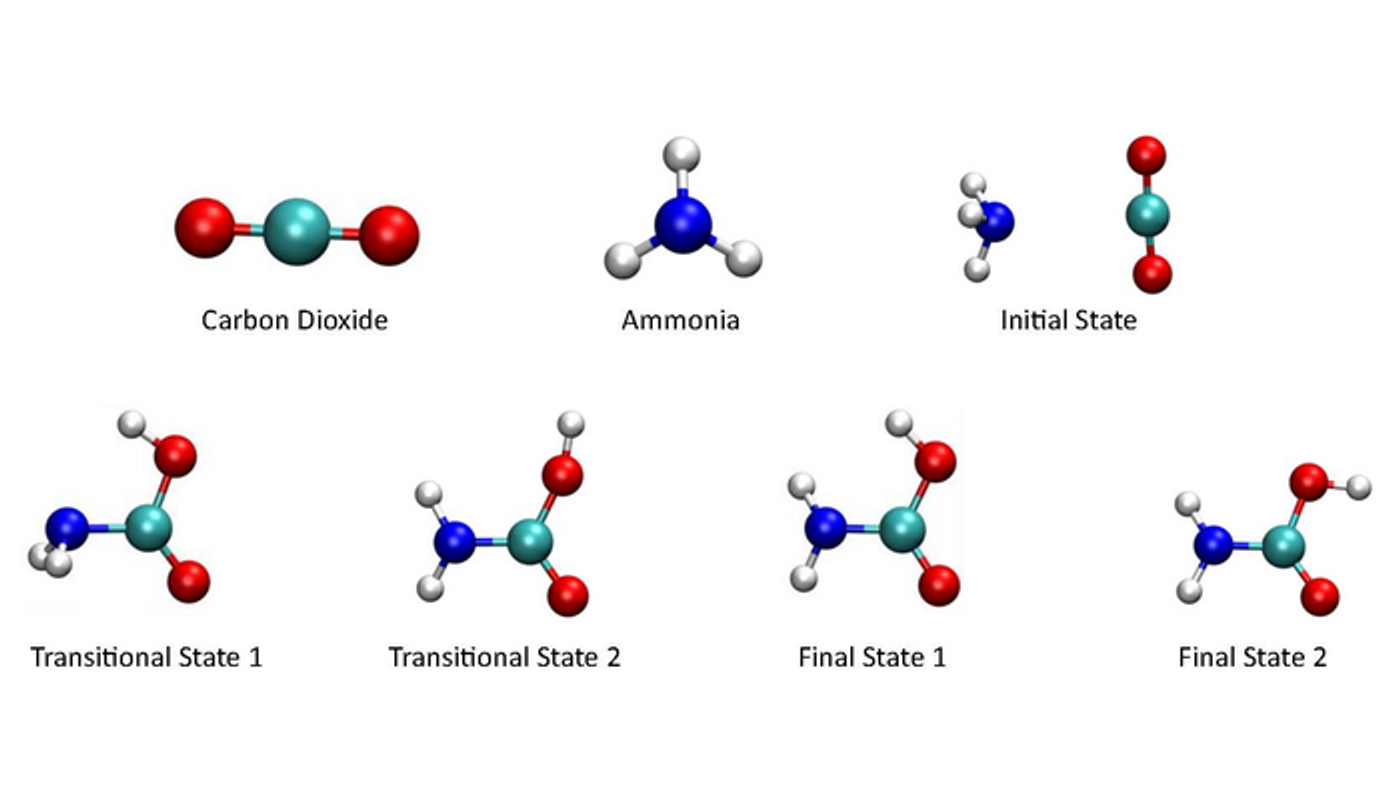Using Quantum Computing for Atmospheric CO2 Capture
Carbon dioxide (CO2) capture, also known simply as carbon capture, is a process that involves removing CO2 emissions from the environment that was put there by industrial processes, most notably from the burning of fossil fuels. There are currently several carbon capture companies who are developing various technologies in the hope of reducing the impacts of climate change from CO2 emissions, but like all technological developments, there is always room for advancements.
Chemical reactions involving carbon dioxide and ammonia. (Credit: Nguyen et al.)
Advancing carbon capture technologies is where a team of researchers led by the U.S. Department of Energy aims to do as they use quantum computing algorithms to examine reactions involving the chemical compound, amine, as amine-based solvents are used in carbon capture. While several early-stage technologies utilize amine-based solvents for carbon capture, the purpose of this study is to quantify molecular vibrational energies involving a simplified amine-based solvent with ammonia (NH3), which is important to understand amine-based reactions.
“We are not satisfied with the current amine molecules that we use for this [carbon capture] process,” said Dr. Qing Shao, who is an assistant professor of chemical engineering at the University of Kentucky, and a co-author on the study. “We can try to find a new molecule to do it, but if we want to test it using classical computing resources, it will be a very expensive calculation. Our hope is to have a fast algorithm that can screen thousands of new molecules and structures.”
For the study, the researchers used a quantum simulator to combine CO2 and NH2 and calculated the ground state vibrational energies of the products and reactants using a variational quantum eigensolver (VQE) algorithm. Their findings indicated their algorithm demonstrated similar calculation accuracy as classical computers while also demonstrating that quantum computing can be used to calculate energies for larger molecules, as well. They concluded their “research showcases quantum computing applications in the study of CO2 capture reactions”, as noted in the study.
“We are trying to use the current quantum computing technology to solve a practical environmental problem,” said Dr. Yuhua Duan, who is a physical scientist with the U.S. Department of Energy's National Energy Technology Laboratory (DOE-NETL), and a co-author on the study.
What new discoveries will researchers make toward CO2 capture in the coming years and decades? Only time will tell, and this is why we science!
Sources: National Grid, Energy, AVS Quantum Science, EurekAlert!
As always, keep doing science & keep looking up!









